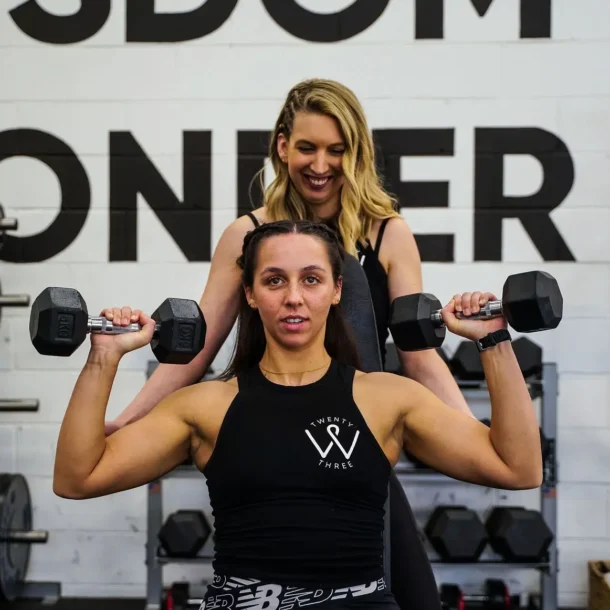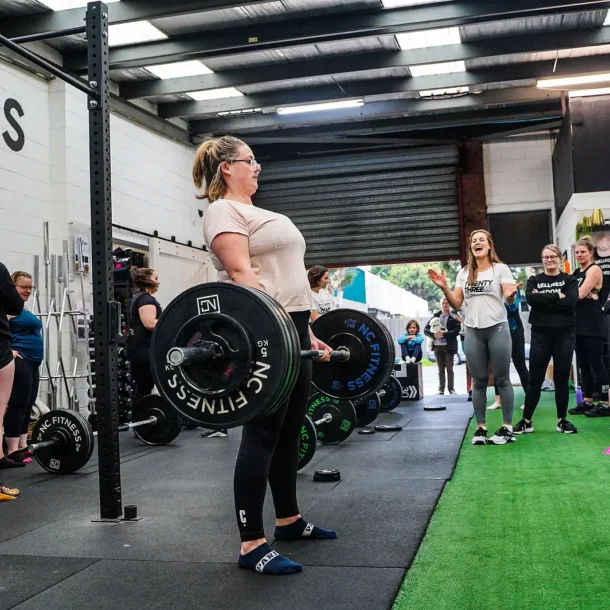
Repeat after me… ‘Ab separation postpartum is natural’. This gap is referred to as a diastasis and is where the 2 sides of the abdominal wall connect on a line of fascia called the linea alba
In 100% of all pregnant women, the abdominal muscles need to thin and separate to accommodate a growing baby. Further, at 6 weeks postpartum 60% of women might still have a gap in the connective tissue and 32% might still have one in 12 months.
It is true that the wrong exercises during pregnancy and poor movement/loading can cause your diastasis to get worse. But many women overlook five other important considerations that exist beyond safe exercise selection, causing them to become frustrated when their DR stops healing and making progress.
As a corrective core specialist, strength coach and mum with a healing DR, I am here to remind you that you CAN do more to help your DR heal before either giving up or looking into surgery!
It is measured by checking the width and the depth between the two rectus muscle bellies when you lift your head while laying on your back. You can have this checked by an expert, but I also highly encourage our members to become familiar with how this feels to them. In doing so, you will build better awareness of change over time and be more mindful of correct loading through the core.
The role of our core and abdominal muscles is to protect the spine. Your goal when you are returning back to exercise postpartum (regardless of the presence of a DR) is to rehabilitate your body’s ability to manage pressure and strengthen its ability to brace correctly as loads increase.
When you are trying to generate too much pressure, we see a doming out of the midline. We a ‘sinking’ when there is insufficient pressure being able to be generated.
Unfortunately, when a mum is looking to heal their DR, they incorrectly believe that exercise selection alone is the answer. As a corrective core exercise specialist, it is true that there will be a list of exercises that are supportive of optimal core restoration and also exercises that will cause poor loading and compensation. But this is not a ‘one size fits all’ scenario. The exercises that might cause bulging or sinking in the first few months when you return to exercise might not be the same as those that might cause bulging months down the track when you have better full body strength.

Beyond smart exercise selection and progressive overload, there are three areas I am committing to over the next year or so to help fully heal my small DR.
After pregnancy, we fall into some poor breathing mechanics. We resort to a shallow breathing style and mouth breathing. Breathing is the basis for great intra-abdominal pressure regulation. Deep breathing and nostril breathing promotes optimal diaphragm expansion and rib movement.
Deep breathing is not belly breathing. This point is particularly important for someone with a DR as we want to make sure we are not only sending pressure to the front (where tissue is already more vulnerable).
I am committing to this practice wherever possible. I catch myself working at my laptop or falling asleep at night to close my mouth and get my side and back ribs moving when I breathe. A bonus of this technique is that it also helps to stimulate the vagus nerve which is awesome at reducing stress.
Another ‘gift’ of pregnancy is rib flare. As the baby grows, the baby forces the ribs out, which causes the wide infrasternal angle and is a common reason why someone with a DR is having difficulty healing it.
The wide angle of ribs is literally putting too much tension on the rectus abdominal to pull them apart and make them more vulnerable to incorrect loading.
From a practical point, I am committing to decreasing my rib flare by working on improved abdominal balance, to strengthen external obliques in comparison to already strong and dominant internal obliques. Further, I am being more mindful in every exercise to keep ribs pulling down and practising “Ha ” breathing and side lying breathing several times per week for 5 or so breaths.
Okay, I have always been prone to lower back tightness, so I am not going to blame pregnancy. I hold a lot of tension through my back and tend to over rely on it when moving and sitting. All joints and tissues function more optimally when they have the ability to fully shorten and lengthen. If your back is tight, it will mean other areas of the body need to compensate. Furthermore, if a muscle is overly shortened, it might have a hard time letting go and also using it properly because it’s already shortened.
In terms of a diastasis, if your back is excessively tight, the ribs will be thrust up and one area of the rib cage will not be able to expand in a balanced way and stop it from healing as it should.
Every night I am including some gentle lower back release work, child pose breathing and stretching. Reducing these tight paraspinals and erector spinae, while continuing to improve my core strength and glute strength, will help ensure I am moving and lifting with better alignment and better able to brace using a neutral spine.
These three things are areas that everyone could benefit from spending some time on. But if you are not sure where to start, book a consultation time with myself or the 23W team and we can help layout a road map moving forward.




Ange Drake is an personal trainer, women’s empowerment coach and fitness blogger in the northern suburbs of Melbourne. She is the director of one of the few womens’ only strength training gyms in Melbourne, 23W. Ange helps women to learn how to use strength based training, nutritional strategies and a positive mindset to transform their bodies, relationship with food and mind.
Can’t decide which of our packages is best suited for you? Take our questionnaire to help you decide!





